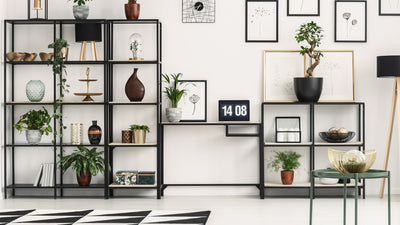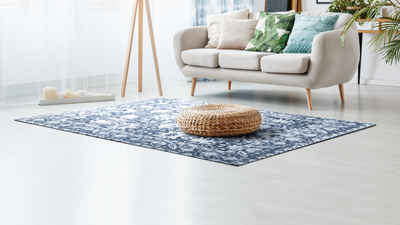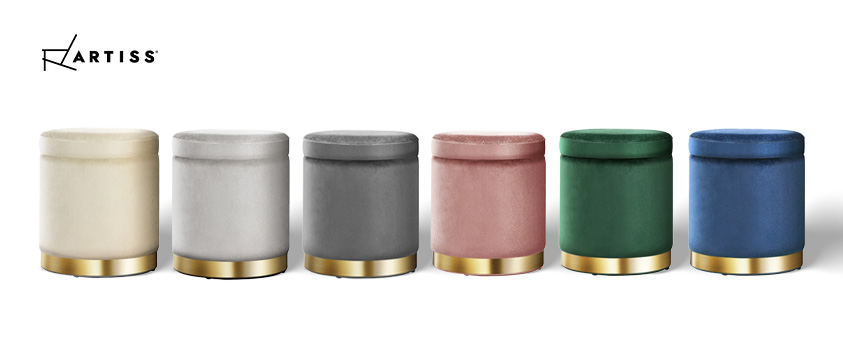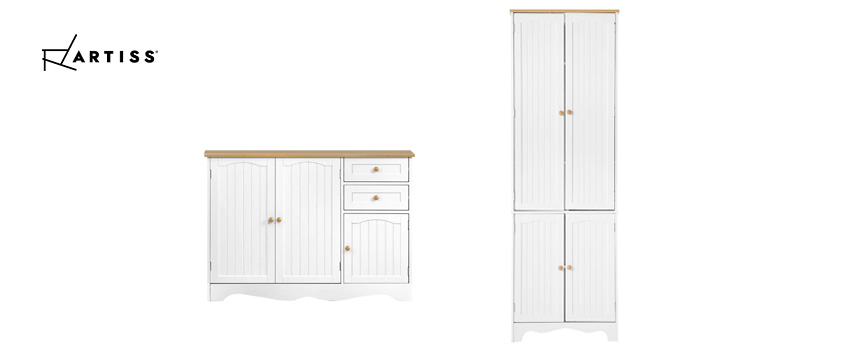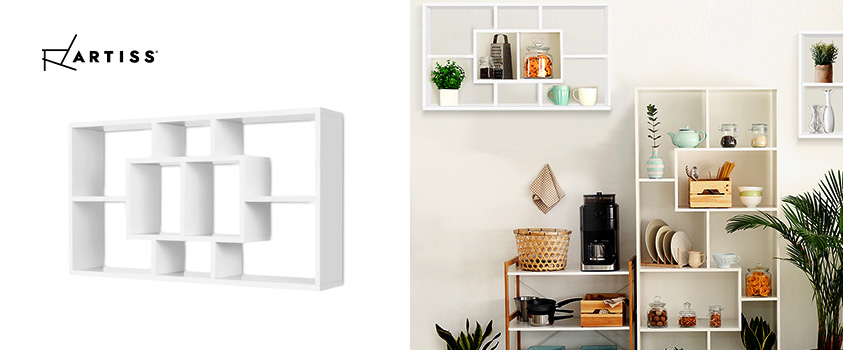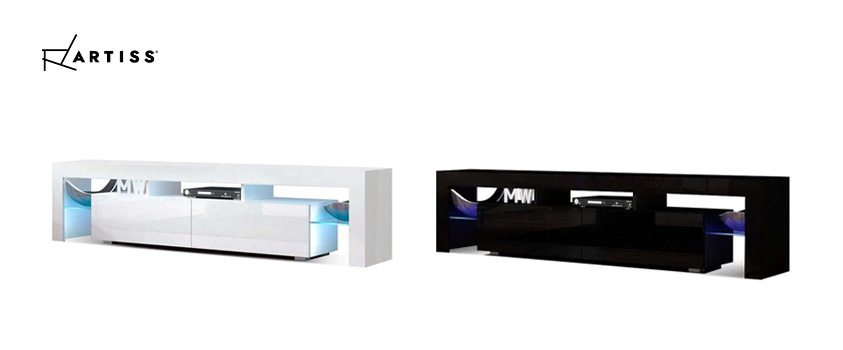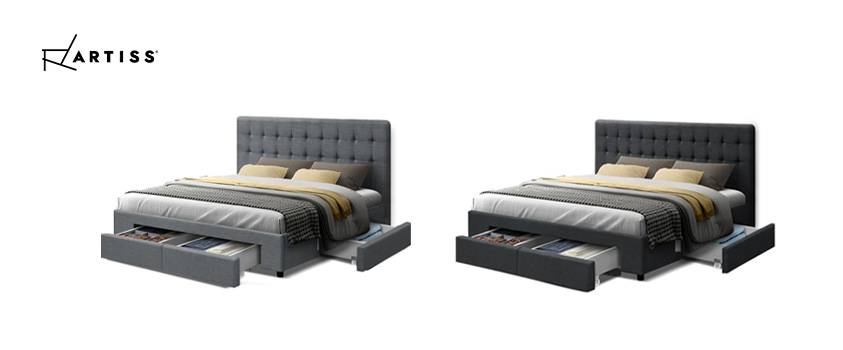Guide to Decluttering & Organising Your Home
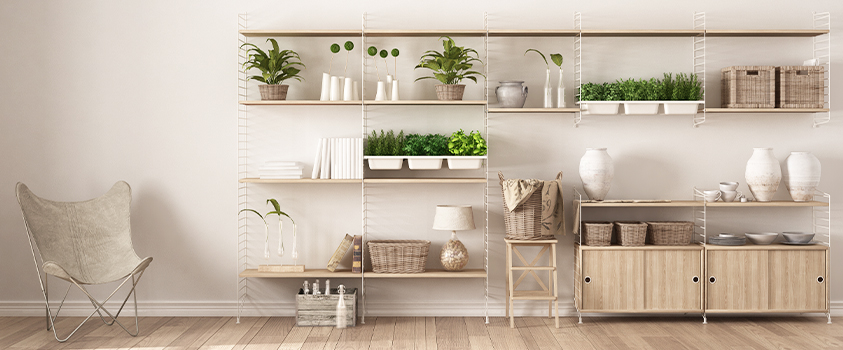
What are the benefits of decluttering & organising your home?
Do you feel your home is the best version of yourself? Or do you sometimes feel like no matter what you do, your home can’t stay organised? Whether you love it or hate it, organising the home can be hard. Not so with Artiss!
Aside from just being cleaner and more visually appealing, there are a ton of health benefits to decluttering, both for your physical and mental health. A tidy environment has been shown to eliminate stress, promote productivity, and manage conflict between housemates and family. A clean home also prevents the build-up of dust, mould, pests, and other allergens. Decluttering is a quick and easy way to inject some much-needed energy into the home, and it’s free! All you need is an afternoon, a cup of your favourite beverage, and the motivation to knuckle down and tidy up!
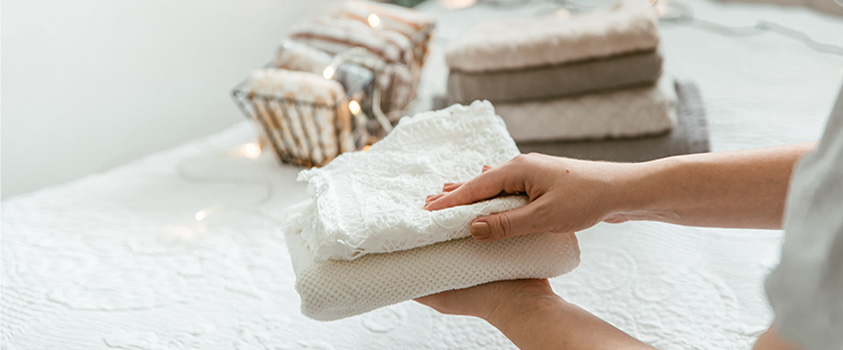
Popular decluttering methods and decluttering tips
The first step to decluttering is to have a plan. When there are so many different ways to tidy your home, it can feel overwhelming simply choosing one and starting! Oh, the irony.
We’ve put together a list of decluttering tips to help you keep house no matter what you own, and paired them with our own stylish, functional furniture. You don’t need to be a cleaning whiz to enjoy a clutter-free space. With a little creativity and ingenuity, your home will be fabulous and stress-free in no time. Start your decluttering journey with us, and you'll have an organised space in no time.

The KonMari Method: The magic of tidying up
What is the KonMari Method?
Developed by Marie Kondo, this method of clearing out your possessions is about mindfulness, introspection, and the beauty of life. It’s not a quick or easy solution to clutter – rather, it’s an entire way of living. From the KonMari Method website: “Tidying is a powerful tool, but it’s not the destination. The true goal of tidying is to clear away clutter so you can live the life you want”.
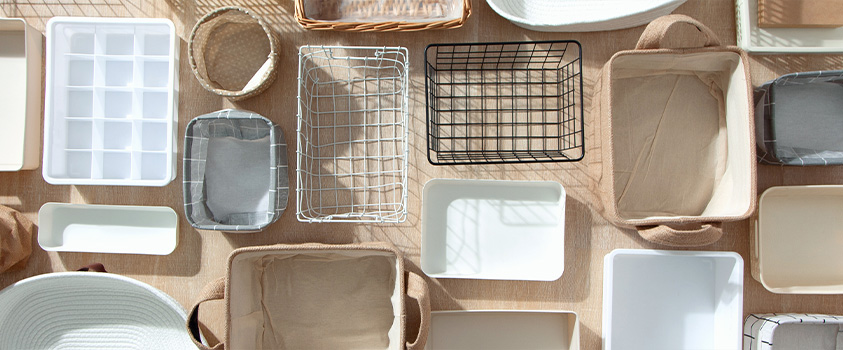
The basic idea behind the KonMari Method is to sort what you own into categories (clothes, books, appliances, etc.) and then engage with them and ask, ‘does this spark joy?’. If the answer is no, you are free to thank the item for its service and let it go. Though many conflate this method with minimalism, it’s not about getting rid of your belongings, but instead, appreciating them for what they are and what they have taught you. This method celebrates sentimental value and helps you identify the clutter surrounding it, leaving you with more space to enjoy the life you have cultivated.
The 6 Basic Rules of Tidying Up
Rule 1: Commit yourself to tidying up.
Cleaning requires motivation, intention, and a can-do attitude. Make sure you’re in the right headspace and you have a clear vision and plan from the outset. It may feel like a lot of effort in the beginning, but the end results will be worth it! Use whatever you need to plan at this stage, whether that means having a decluttering checklist, a project chart, or a friend to keep you accountable.
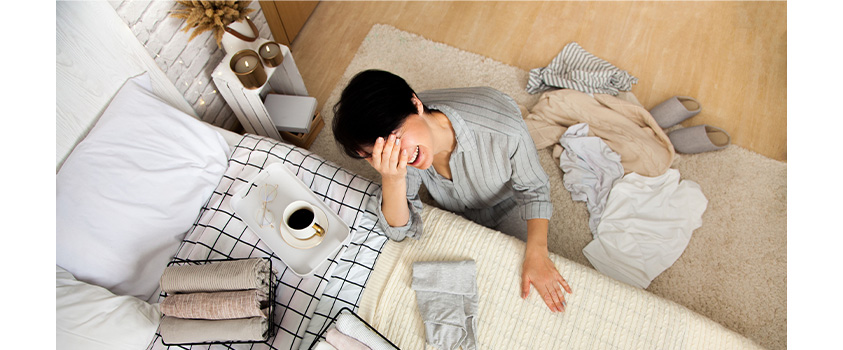
Rule 2: Imagine your ideal lifestyle.
What kind of house do you want to live in? What is your ideal lifestyle? Try to visualise it with your preferred creative method: sketching, using magazines, or writing it down in your favourite notebook.
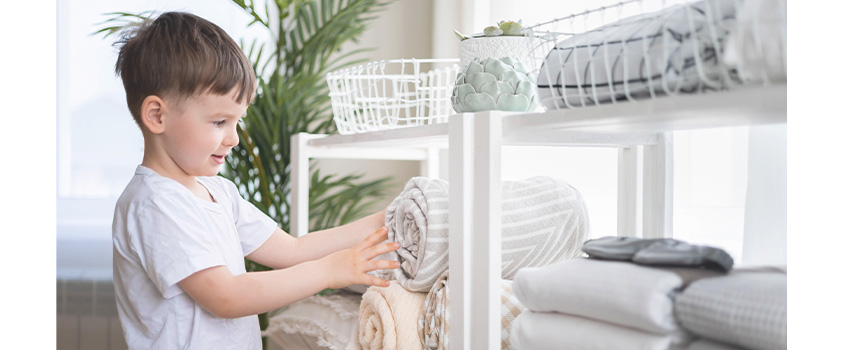
Rule 3: Finish discarding first.
You can’t put everything away until you know how much you have to store. Don’t go out and buy your new furniture, storage tubs or decor until after you’ve let go of everything that doesn’t spark joy.
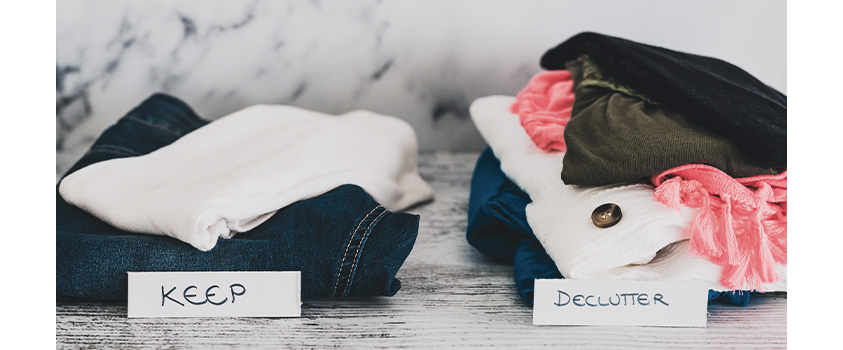
Rule 4: Tidy by category, not location.
Many cleaning methods recommend tackling room by room, but the KonMari method recommends tidying by category instead - clothes, books, sentimental items, paper clutter, and so on. We often store the same kind of item in multiple places - by sorting by category, we can see how much of each item we have and reassess from there.
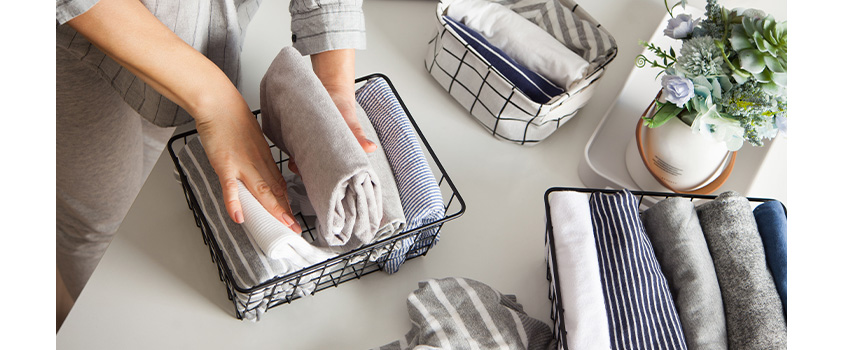
Rule 5: Follow the right order.
The KonMari method has a strict order that determines which category to clear: clothes, books, papers, komono (miscellaneous items) and sentimental items. This order is designed to show you tangible proof of your effort up front, and increase your enthusiasm and energy as you go.
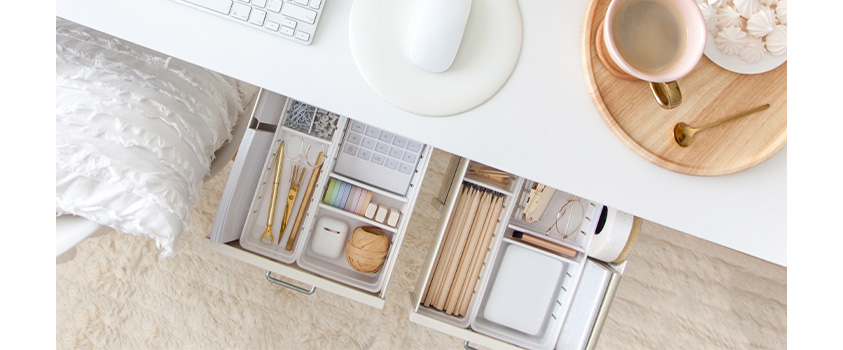
Rule 6: Ask yourself if it sparks joy.
Marie Kondo describes joy as “a little thrill, as if the cells in your body are slowly rising”. Pick up a random object: do you feel joy looking at it? Does it inspire you? If the answer is yes, you should keep it. If the answer is no, it might be time to thank it for it’s service before letting go.
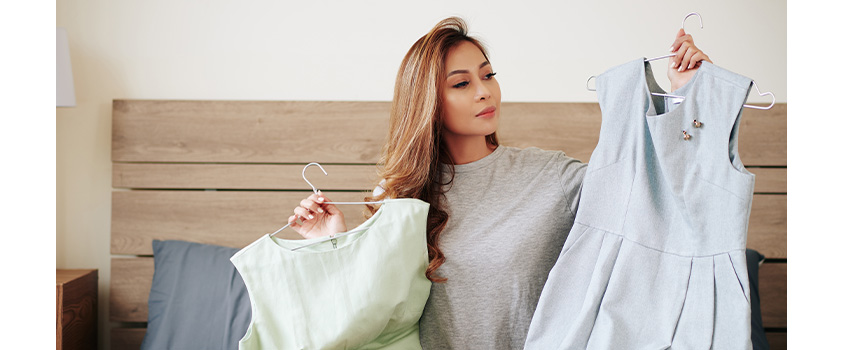
Of course, once you’ve gone through your belongings, you’ll have to find a place to store what remains. Think multifunctional storage pieces built from quality materials that are easy to use, like these simple storage ottomans, room dividers with shelving, or our unassuming foldable storage cabinet.
For more ways to incorporate the KonMari method in your life, check out how to KonMari fold and keep your clothes stored neatly forever.
90/90 minimalism rule: The minimalist dream
Developed by Joshua Fields Millburn and Ryan Nicodemus of The Minimalists, this method involves, once again, talking to objects. With this method, you eliminate the ‘just-in-case’ objects that you have been holding on to, and keep only what you need. Pick an object and ask yourself whether you’ve used it in 90 days. If you haven’t, how likely you are to use it within the next 90 days? If the answer is no for both, it’s probably time to let go. However, Joshua and Ryan do clarify – the rule maybe 120 days, six months, or less, depending on individual circumstances. What matters is your honesty and self-reflection.

Minimalism is at once an artistic movement, a style, and a philosophy. It’s a home organisation style that uses the simplest and fewest elements for maximum effect. A minimalist home is uncluttered, curated and full of intention. Simple pieces like this handleless 4-drawer coffee table are ideal for their multifunctional and seamless design. You can also find minimalist desks, bed frames, sideboards and shelving - whatever piece you have in mind, there is a simple, elegant solution for the minimalist home.
Feng shui: Chinese geomancy
The Chinese practice of creating balance and harmony in a space, feng shui is about balancing eight areas or trigrams to improve health. These eight areas are associated with different aspects of your life such as wealth, health, and your relationships.
Each of these areas correlates to an element (wood, fire, earth, water or metal) and a compass point (north, south, east or west). Arranging in an optimal way is said to create a balanced environment that welcomes positive energy, or qi.
There are several different schools of feng shui that require different arrangements, but across the board, feng shui incorporates minimalism, natural light, calming colours, and paying attention to the positioning of pieces to achieve harmony. For example, placing beds, chairs and furniture far from the door, but still within eyesight.
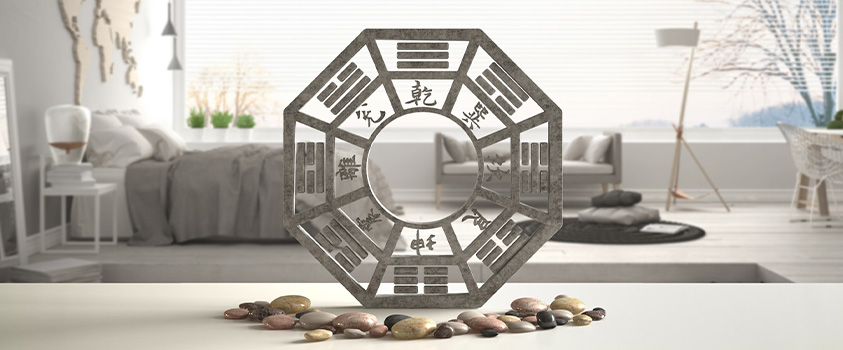
Creating good Feng Shui
Start at the entrance
Your front door is known as the mouth of qi, or the point where energy can enter and flow from. This is the first place you should start. First, declutter the area and make it neat, tidy, and accessible. Next, clean the area including wiping down the door and cleaning your doormat. Make sure the area is well illuminated with natural or artificial light. Finally, clear debris from the outside too - remove overhanging branches, open up stuffy areas, and create an inviting front door space.

You should apply the same logic to other doors in your home: keep them clutter free, easy to open, and keep the flow of energy going smoothly.
Slow the energy flow
If there is a straight line from your front to you back door, your chi may be going too fast! There are rarely straight lines in nature, so there should be as few straight lines in your home as possible. You can break these lines by placing rugs, artwork, plants or other focal points that draw the eye, giving guests a chance to stop and admire your home and slowing the flow of chi.
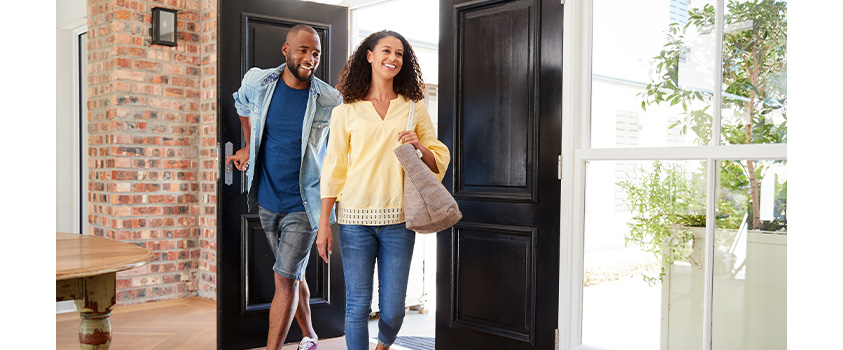
Understand the commanding position
The commanding position is all about being able to see what’s coming. Place your furniture diagonally from the door, so you can see the entrance without being in direct line of sight. Keeping a clear wall directly behind you also helps to support your back and give you confidence.

Maximise natural light
Natural light is a mood booster that naturally wakes you up and energises you for the day. It makes your home look bigger and more vibrant. Clean your windows regularly and keep them free of clutter, so you can always have access to clean and clear natural light.
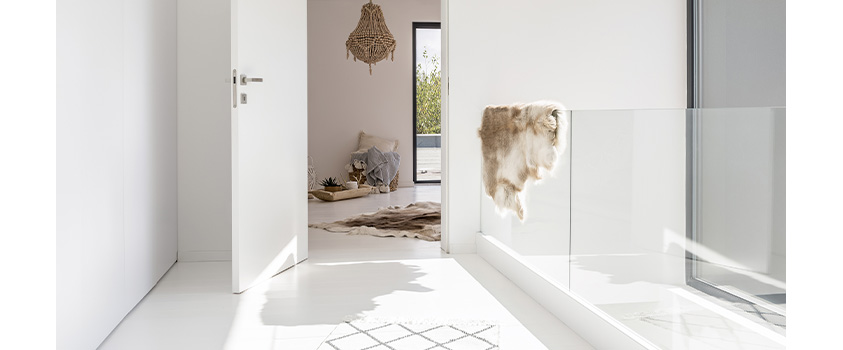
Use your mirrors strategically
Mirrors are a great way to expand a space, direct light, and direct chi. Experts recommend putting them perpendicular to the front door, hanging your best mirrors in the dining room, and avoiding hanging mirrors in the kitchen (where it’s believed to host negative energy and bad luck) or above a bed or sofa (to avoid having a heavy ornament over your head). Wherever you place the mirrors, make sure they are reflecting something positive (like a nice view) and not something busy or negative (like the workload on our desk).
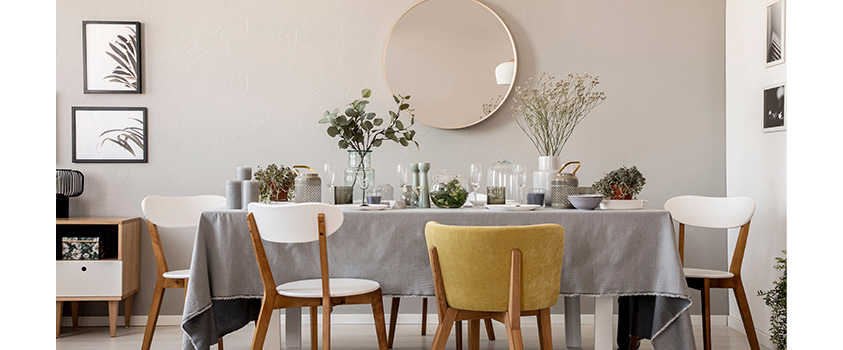
For perfect placement, you want pieces that are easy to move, install, or accessorise. Artiss TV mounts and stands are perfect for keeping your television at the perfect height and position. You can use room dividers to separate different areas, another proponent of feng shui. You’ll also want to clear away clutter, which you can do easily with a storage ottoman or sideboard.
ClutterBug Philosophy: Clear the moths from the closet
Created by Cas Aarssen, ClutterBug Philosophy is founded on the idea that there are four types of organisation styles with distinct visual and practical needs: The Ladybug, Bee, Cricket, and Butterfly.
Ladybugs
Ladybugs are beautiful on the outside, but can be messy on the inside! They are stressed by visual clutter so their messes are kept out of view in junk drawers, boxes, baskets and cabinets. A Ladybug benefits from having furniture with lots of room for decorative storage, like this Artiss Scandinavian-inspired sideboard. Cube shelving is also a great choice, as you can find a wide variety of baskets, coloured drawers, or other inserts to really make your storage pop.
Bees
Meanwhile, Bees prefer to see all their current and ongoing projects on display at all times. They also tend to hoard items that might be useful in the future. They like detailed and specific organisation systems. For these reasons, open storage with clear bins, baskets or doors can be a great option. This Artiss open closet rack with storage coupled with our clear stackable shoe boxes are a great way to store clothes for the bedroom, while our extensive collection of wall shelves will help keep everything on display and out of the way.
Crickets
Crickets are minimalists and perfectionists who enjoy visual simplicity and meticulous attention to detail. An individual with Cricket-like organisational tendencies may enjoy our range of RGB LED Gloss furniture, including this dramatic entertainment unit, or they may prefer the natural wood-grain look of the minimalist Artiss Jason unit.
Butterflies
Finally, Butterflies live by the mantra out of sight, out of mind. If it isn’t on display, it doesn’t exist. Butterflies also have trouble maintaining a complex organisational system: they prefer simple systems with fewer and larger categories. If you relate to the Butterfly in this way, keep things open and artistic with our 5-tier metal and wood open shelving, our 9 shelf tree bookshelf, or even this storage room divider.
Other creative decluttering tips to clear your home and mind
Did any of these decluttering styles inspire you? If you still haven't found anything that resonates with you, here are a few tips that many experts agree help keep your home in tip-top shape.
-
Start decluttering for 5 minutes at a time. You don't need to start with a grand gesture: start small and work your way up!
-
One in, one out: Every time you buy something new, try to get rid of something old.
-
Oprah's closet hack: Take the time to remove all your clothes from the wardrobe and rehang them on the rack backwards. When you wear the outfit next, turn the hanger the right way around. After a few months, donate clothes that you haven't touched. This is an easy way to identify your out-of-season clothes and gives you a visual indication of what clothes you wear regularly.
-
The four-box method: Get four storage boxes and label them as trash, donate, keep, or relocate/store. Now go through everything you own and put it into one of these boxes. Simple, satisfying, and straightforward decluttering.
-
Have a garage sale. Have your cake and eat it too - get rid of your clutter and make some money! Of course, this idea can be daunting, since you'll have to set aside time and space to price everything, advertise it, run it, and welcome a lot of strangers to your front yard. If a traditional garage sale is too much for you, you can sell your items on eBay or Facebook marketplace instead. You can also search for a local buy/swap/sell group and trade your items for something you need instead. One man's trash is another's treasure, after all! This is also a great way to declutter bulky items - just make sure to include buyer pickup only in your listing!
-
Glass jars are a great way to organise on a budget. Since most jars are clear, they show you exactly what you have in any given area. Are your kitchen cabinets filled to the brim with random packets and spices? Move everything into glass jars for a sustainable, aesthetic, practical display. Use some creative DIY to make an organiser for every occasion. Find a use for all those spare doll brushes, building blocks and other tiny vacuum-clogging children's toys - turn them into a decorative display instead. From baking supplies to craft supplies, stationary to spices, jars are the perfect decluttering tool for most household items.
-
Create zones. A house can feel cluttered when all your items are in disarray and you can't find anything. Create task-designated areas - the office space, the reading nook, the children's playroom, the meditation corner, etc - and keep your items in those designated areas.
-
The best decluttering tip: save the organisation products for last! If you're surrounded by unwanted items, organising them is not going to make a difference. It can be tempting to buy pretty storage containers, or drawer dividers, or a notebook, with the intention of using it to declutter your life. But remember: you're trying to have LESS stuff, not more storage!
Declutter with Artiss
Whichever way you choose to declutter your home, you’ll find a solution with Artiss. Our wide range of pieces are perfect for any style, and come in a range of styles with customisation options to help you live your best-organised life. Even better, at Artiss, we pride ourselves on prompt delivery and customer service led by a friendly Australian-based team. Get started on your decluttering dreams today with Artiss.
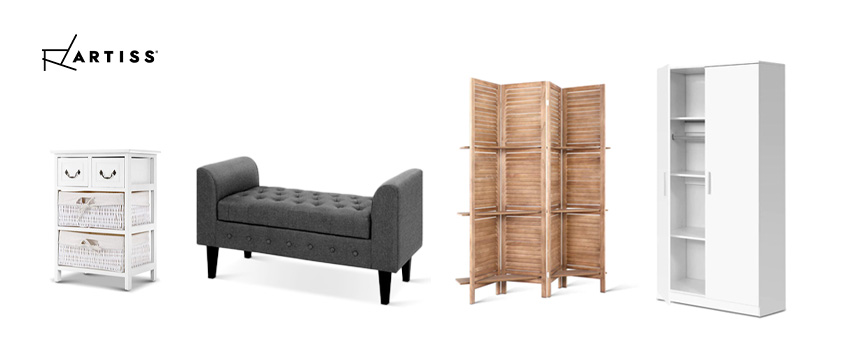
Top Home Decluttering & Reorganisation FAQ’s
Where to start decluttering?/ Which room should I declutter first?
It depends which decluttering method you are using and your preferred categorising method. Do you prefer going room to room in chunks, or do you agree with Marie Kondo and sorting by category? Do you prefer lots of little, specific categories, or do you prefer broader categories and less precise systems?
If you don’t know where to start, room to room is an easy, intuitive method. If you’re easily overwhelmed by mess, the best place to start is the bathroom - you’re unlikely to come across sentimental items, you’re more likely to throw out items, and it’s a small room for a quick win. If you’re up to the challenge, you can start with the highest traffic area.
If you start by category, Marie Kondo suggests beginning with clothes as it gives immediate visible results, as opposed to miscellaneous items that may or may not be buried in a junk drawer. If you’re not a strict KonMari follower, you can start with the category that will make the biggest impact on you: maybe you don’t have a lot of clothes, but you have a large home library. Maybe you don’t have a lot of books, but you have tons of CDs and records. Whatever will give you the best, more impressionable results up top.
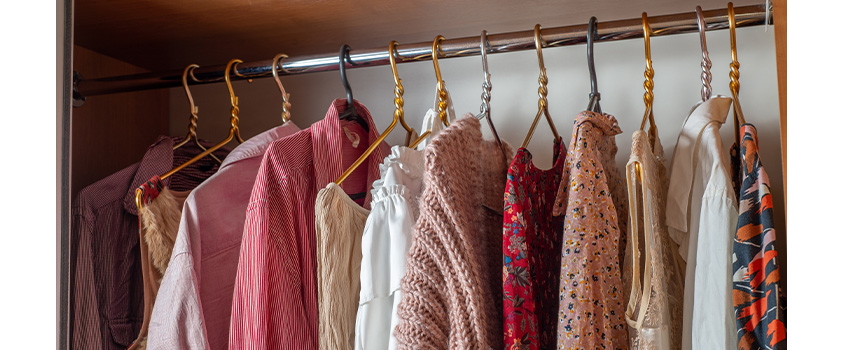
Should I hire someone to declutter my home?
It depends! If you are very self-motivated, find it easy to make decisions, and don’t get overwhelmed easily, then you may not need to hire a professional - you can be your own expert cleaner! It’s also a lot easier to do your own decluttering if you live alone, don’t have a lot of items, or already live in a clean home.
Of course, sometimes we all need a little help. It’s easy to say you’ll declutter if your home is already semi-organised, but it’s harder to start when you home is covered in doom piles, dirty dishes, and junk drawers in every corner. If you struggle to find time to clean, are easily overwhelmed, and have trouble making decisions, it’s always helpful to have an extra hand. You could get a friend to help you, or you can hire a professional organiser. A professional organiser can give you some much-needed perspective, teach you new strategies and techniques, and help you get the job done in record time.

Like with any professional hire, there are some green and red flags to look out for.
Signs they should be tossed:
-
They claim to have a magical one-size-fits-all solution to all your problems. Everyone has different priorities, organizational styles, and definitions of clutter. A professional organiser shouldn’t force their style on you and make outlandish promises they may or may not be able to keep.
-
They want to do the work without your involvement. It’s tempting to take a hands-off approach, but you’ll regret it if the organiser throws out something sentimental, implements a system that doesn’t make sense to you, or completely ignores your requests. It also helps to see these items be removed from your life so you can process and move on, instead of having it all magically disappear.
-
They shame you for wanting to keep certain items.
-
While a professional organiser does not necessarily need qualifications, you should be able to see previous projects they’ve worked on, talk to their references, and have some written agreement in place for their services.
Signs they spark joy:
-
They have an extensive portfolio and references.
-
They talk you through the entire process and work with you to create the ideal organization strategy for you.
-
They make you feel comfortable and not ashamed of your mess or what you choose to keep.
-
They help you develop strategies to maintain your home after the process is done.
Should I try to declutter in one day?
If you think you can get it done all at once, sure! But there’s no reason to rush. Life is busy and it can be hard to set aside an entire day for decluttering. You can start by setting aside 5 minutes every day to go through a single drawer or room, or throw out 5 items, whatever works for you. If you do set aside a whole day, you may want to enlist the help of friends, family or a professional.
In the end, you should choose a decluttering timeline that is easiest for you. The less stress the better! Thankfully, it’s much easier to maintain a clean home than it is to get it clean in the first place.
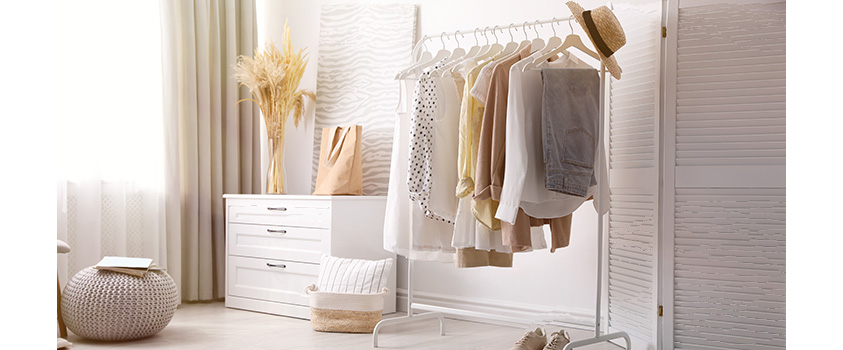
How should I approach decluttering when overwhelmed by stuff?
It’s easy to fall prey to choice paralysis when we’re put in front of a cluttered room. Some people can shake off the overwhelm once they have a starting point. Others might sit and stare for hours before ultimately throwing in the towel. In any case, the start is often the hardest part.
If you think you’ll feel fine once you get started, then you can begin by removing the easiest things first - broken items, easy yes or no items, things that you can immediately action. Break your big task into smaller tasks. If you’re going one room at a time, you can start with one cupboard, one corner or one zone. If you’re starting by category, you can start with clothes and then break that into shirts, pants, unmatched socks, and so on.
If you have a panic attack just thinking about organising your home, then it might be time to hire a professional organiser. If you can’t afford one, ask your friends and family for help - sometimes all you need is an extra set of hands!
How do I store items I want to keep, but don't regularly use?
Even if you live a minimalist lifestyle, there are some things you'll have to store for a rainy day. Luggage, seasonal items, spare bedding, product warranties; there are many things that you don't need right away, but it would be a hassle to throw them out and replace them. So how can we maximise our storage space?
Some great advice for long term storage: label it, keep it visible, and maintain easy access. A great way to do this is to use clear, nesting containers. Make use of vertical space; keep everything you need at eye level or lower, while things like holiday decorations can take the high shelf.
Under-bed storage containers and vacuum storage bags are both great ways to store clothing and spare or seasonal bedding. These make use of the free space and allow you to store far more than if you simply folded them away.








